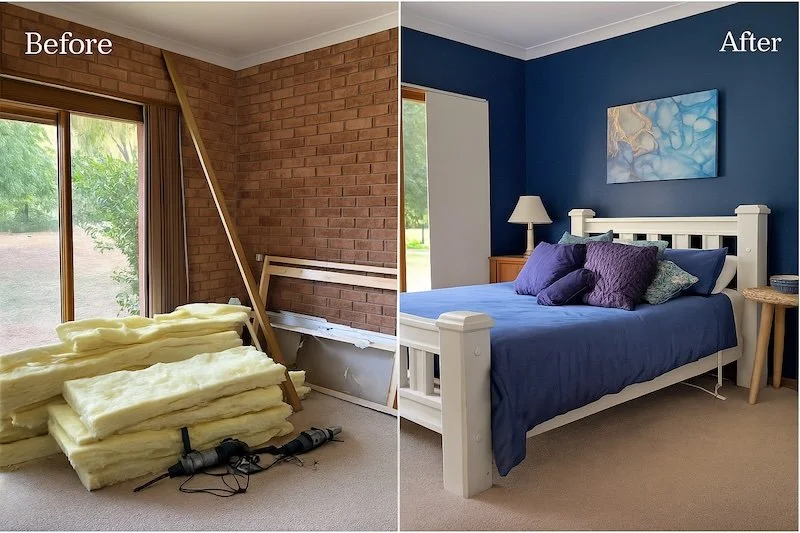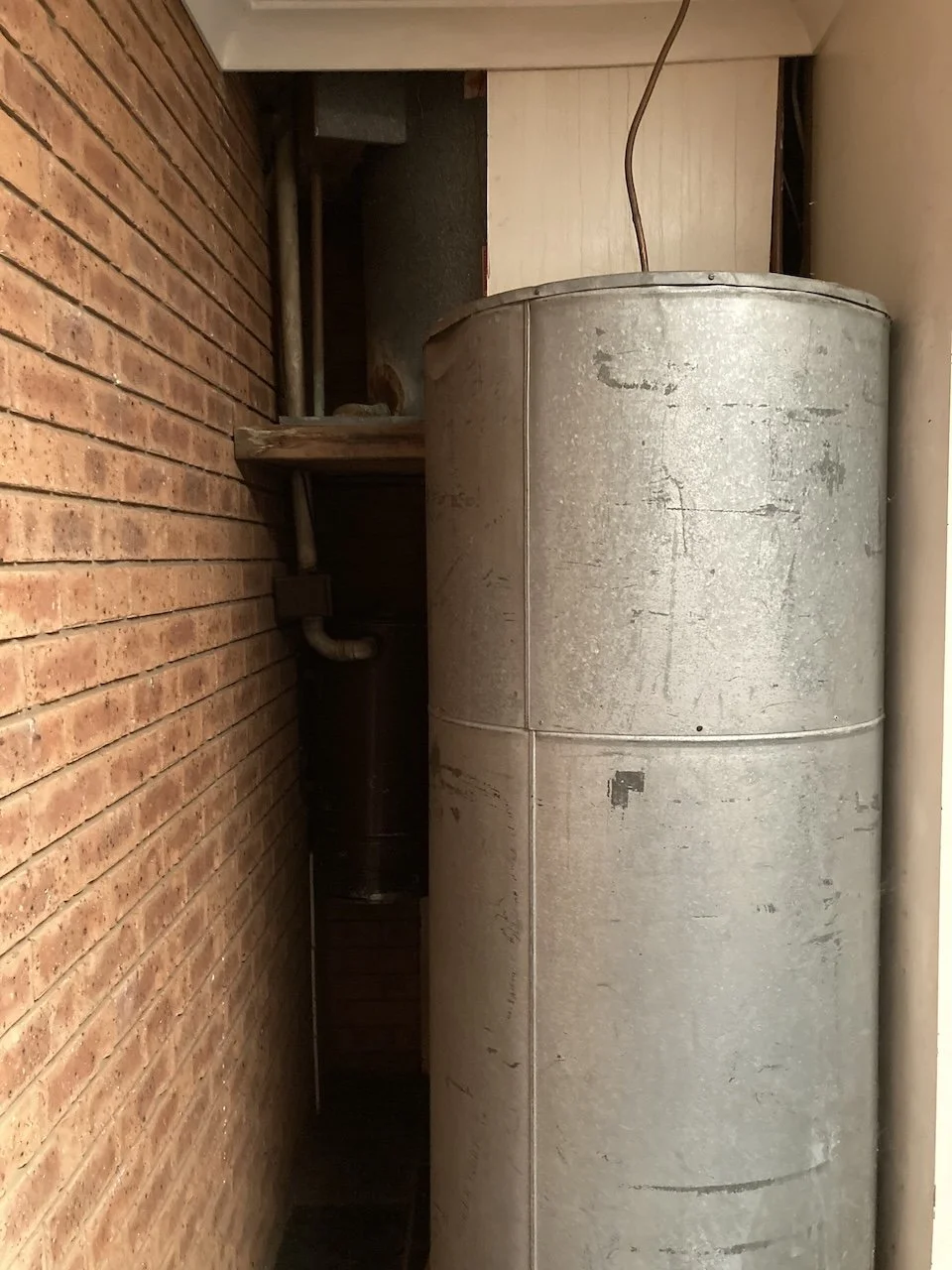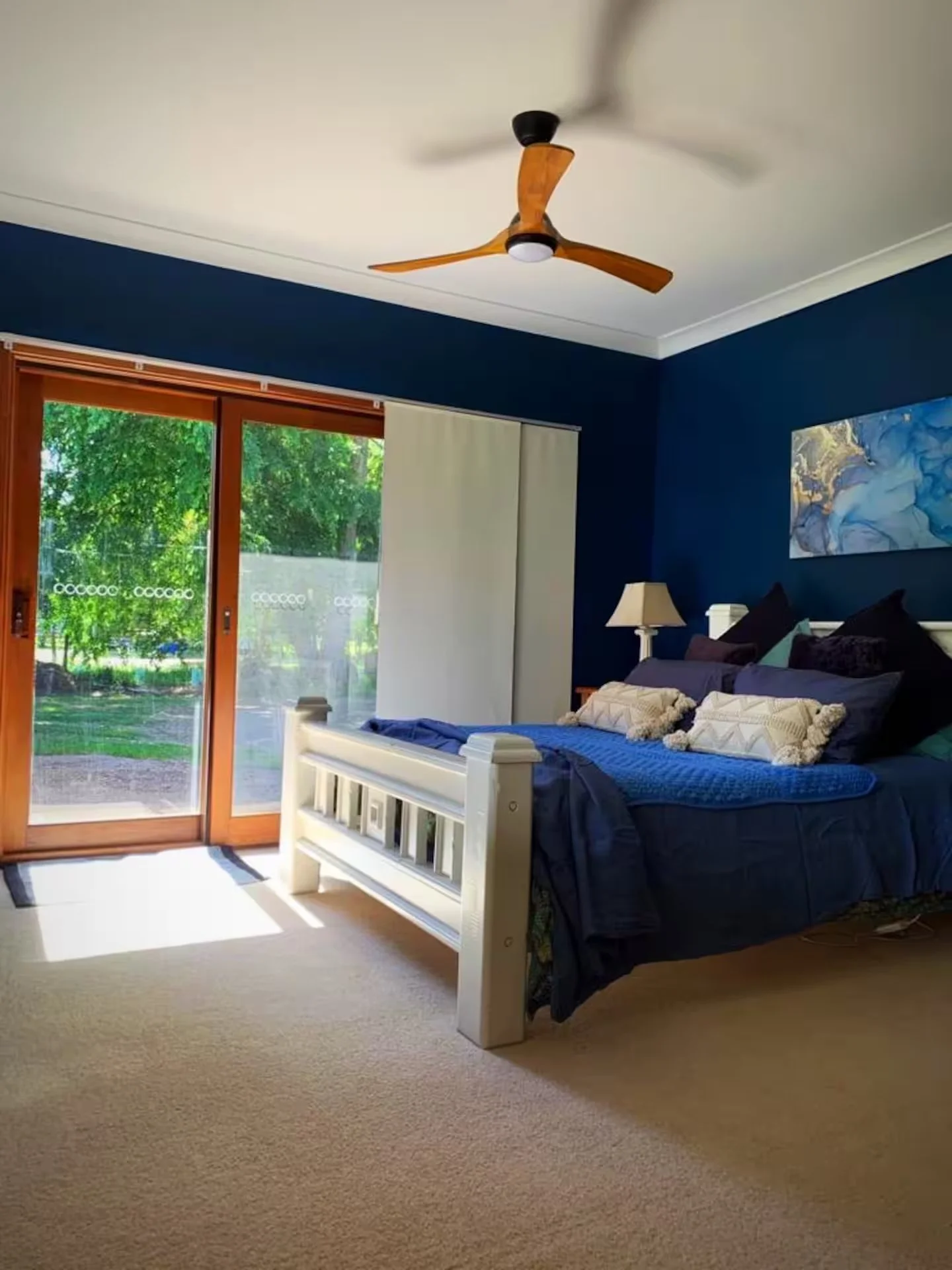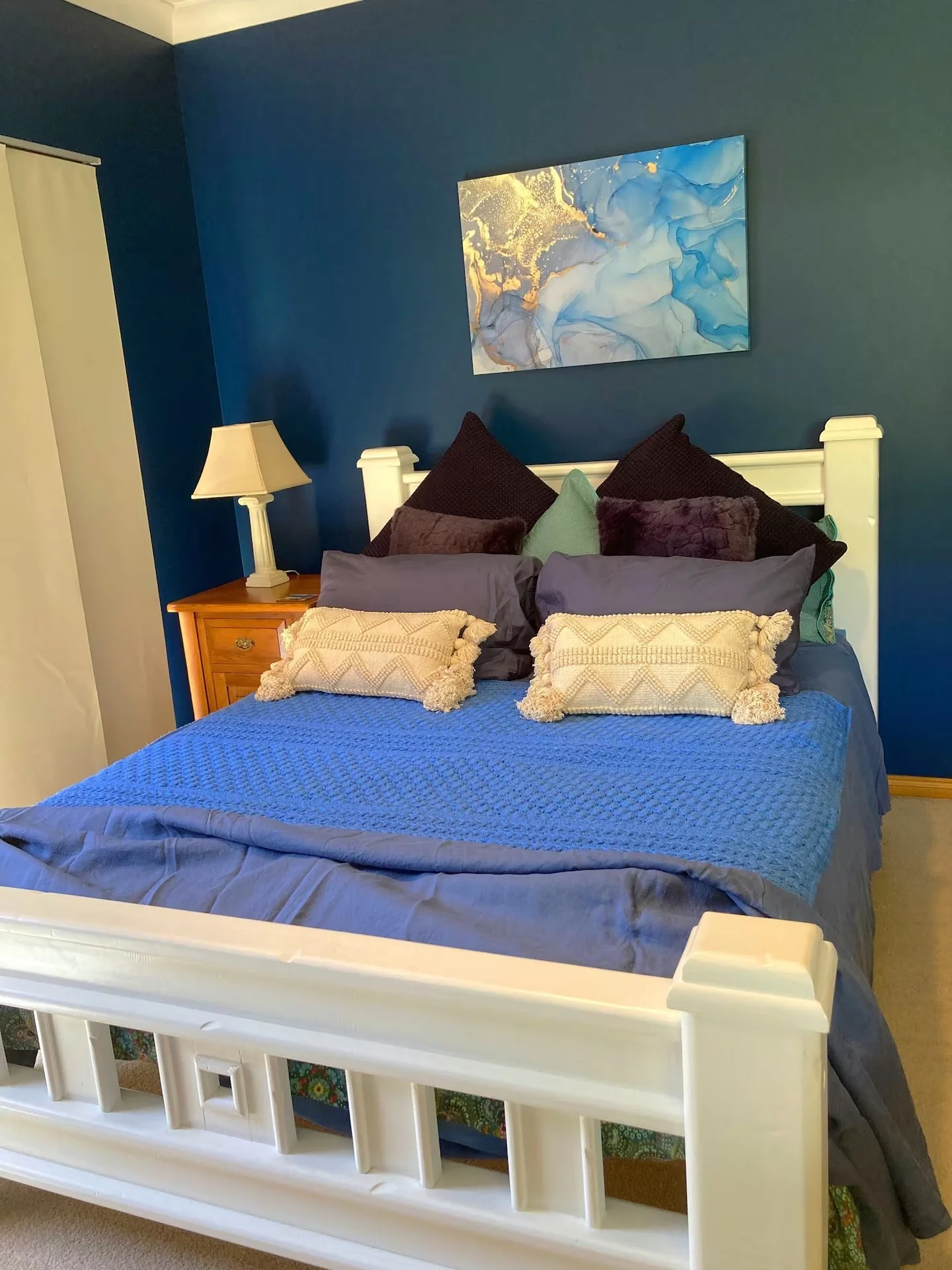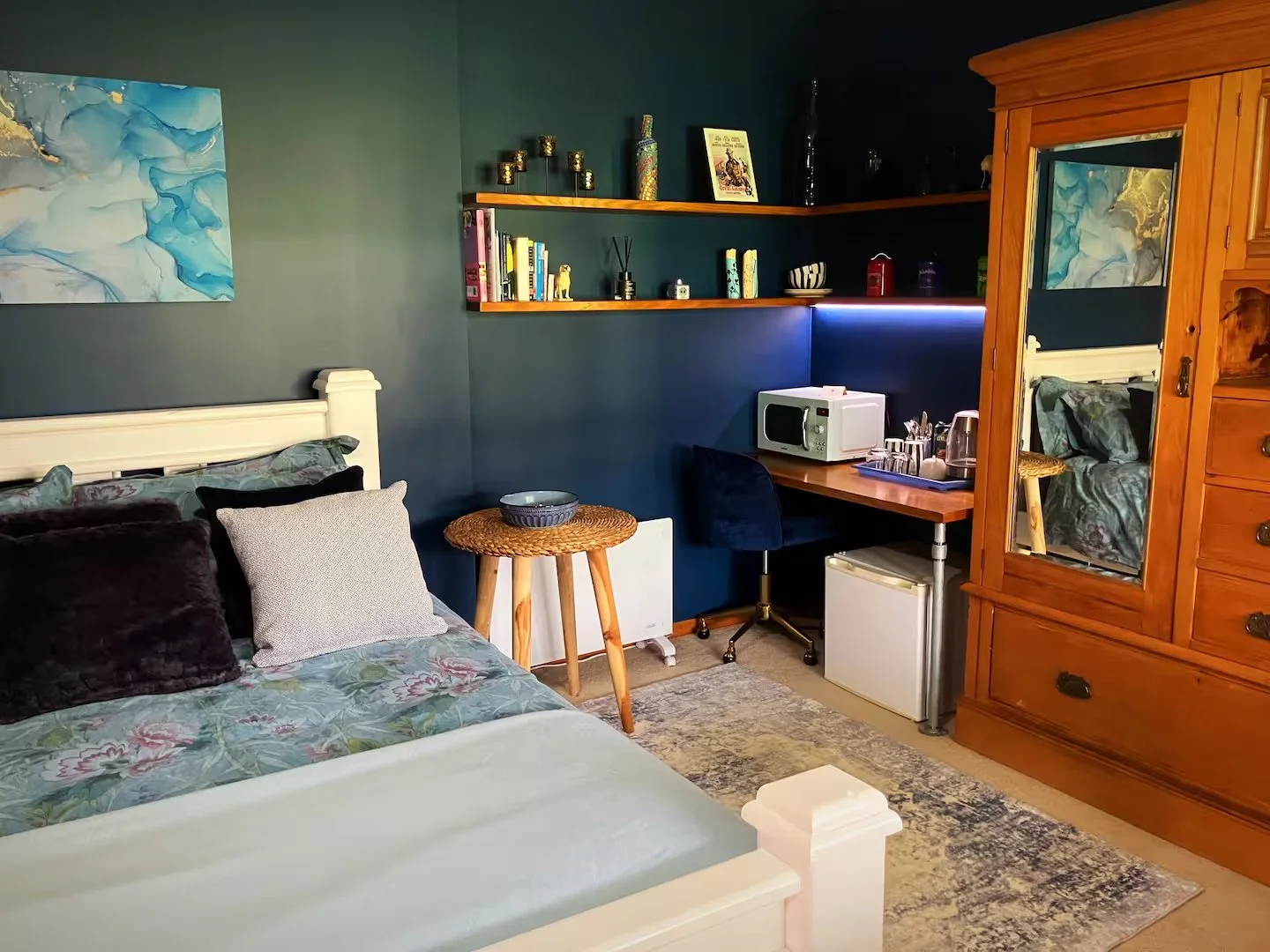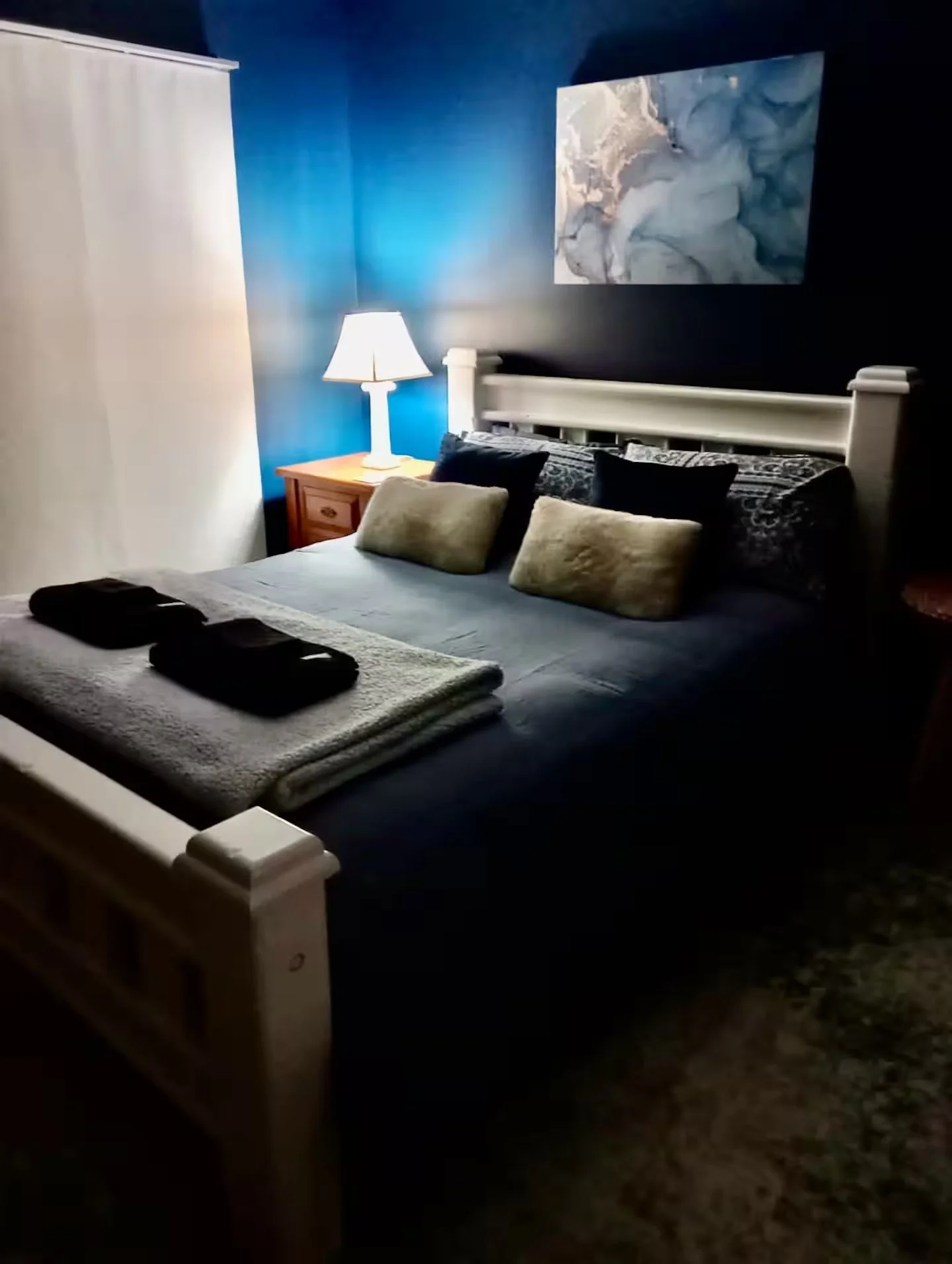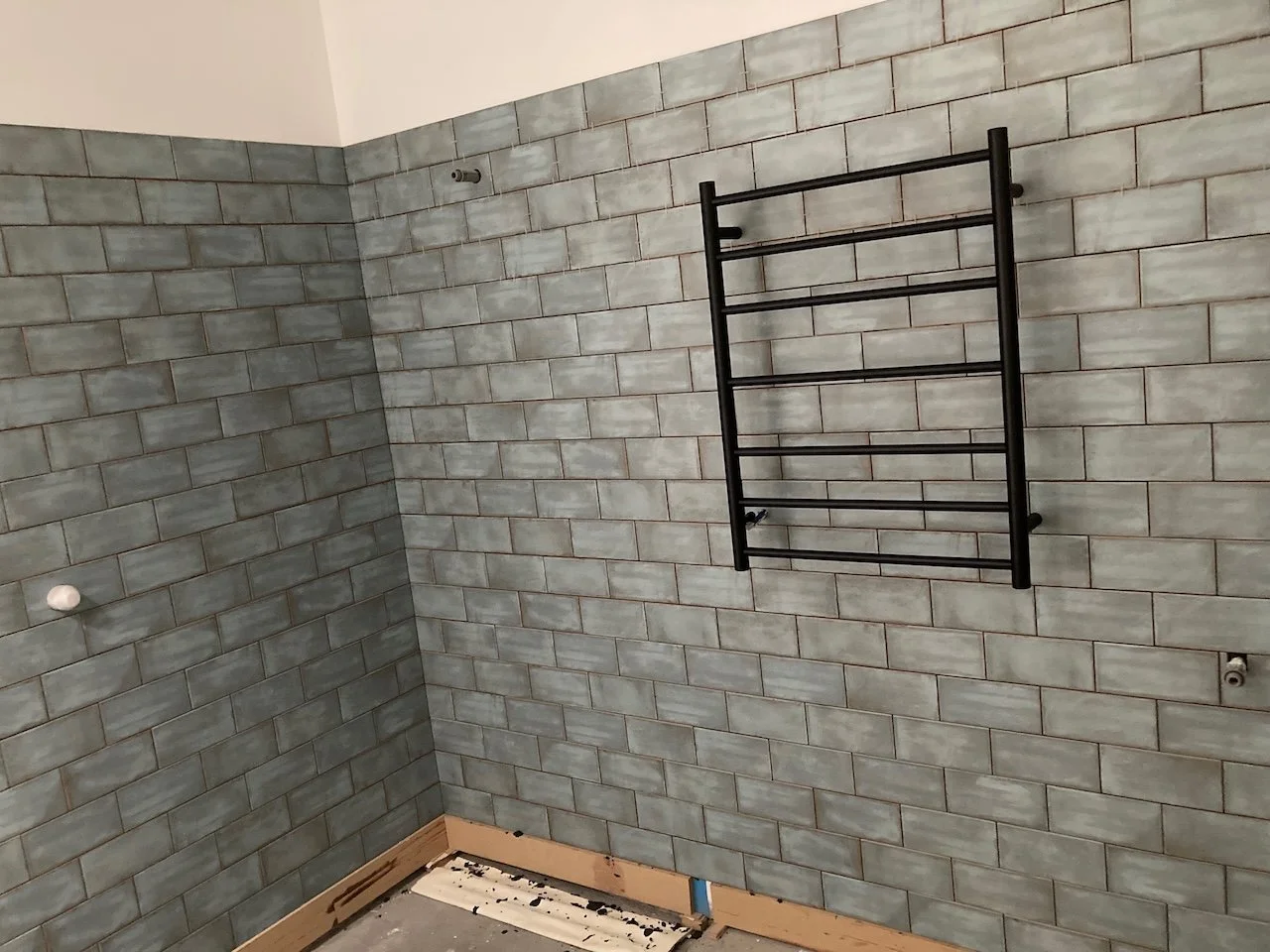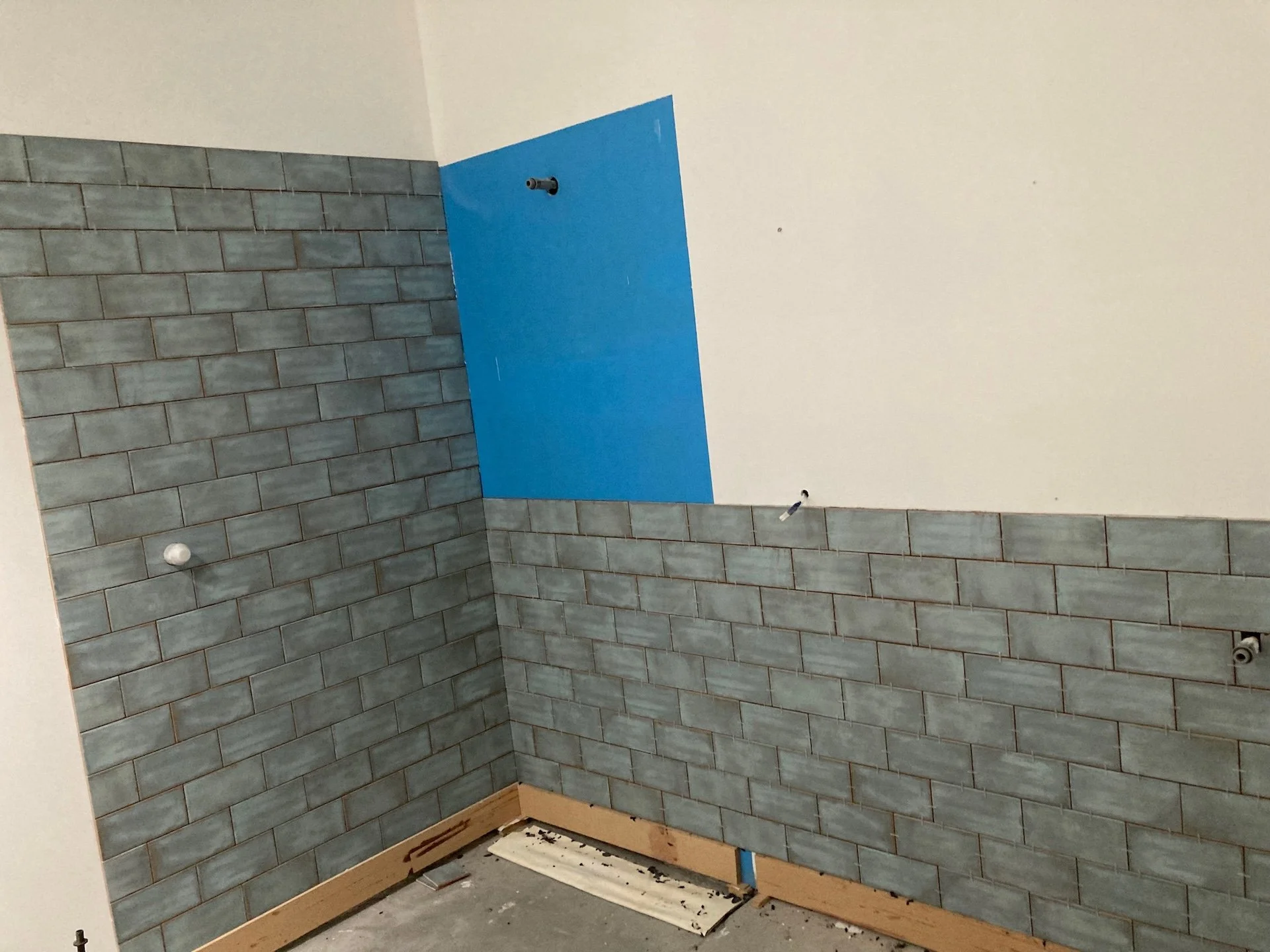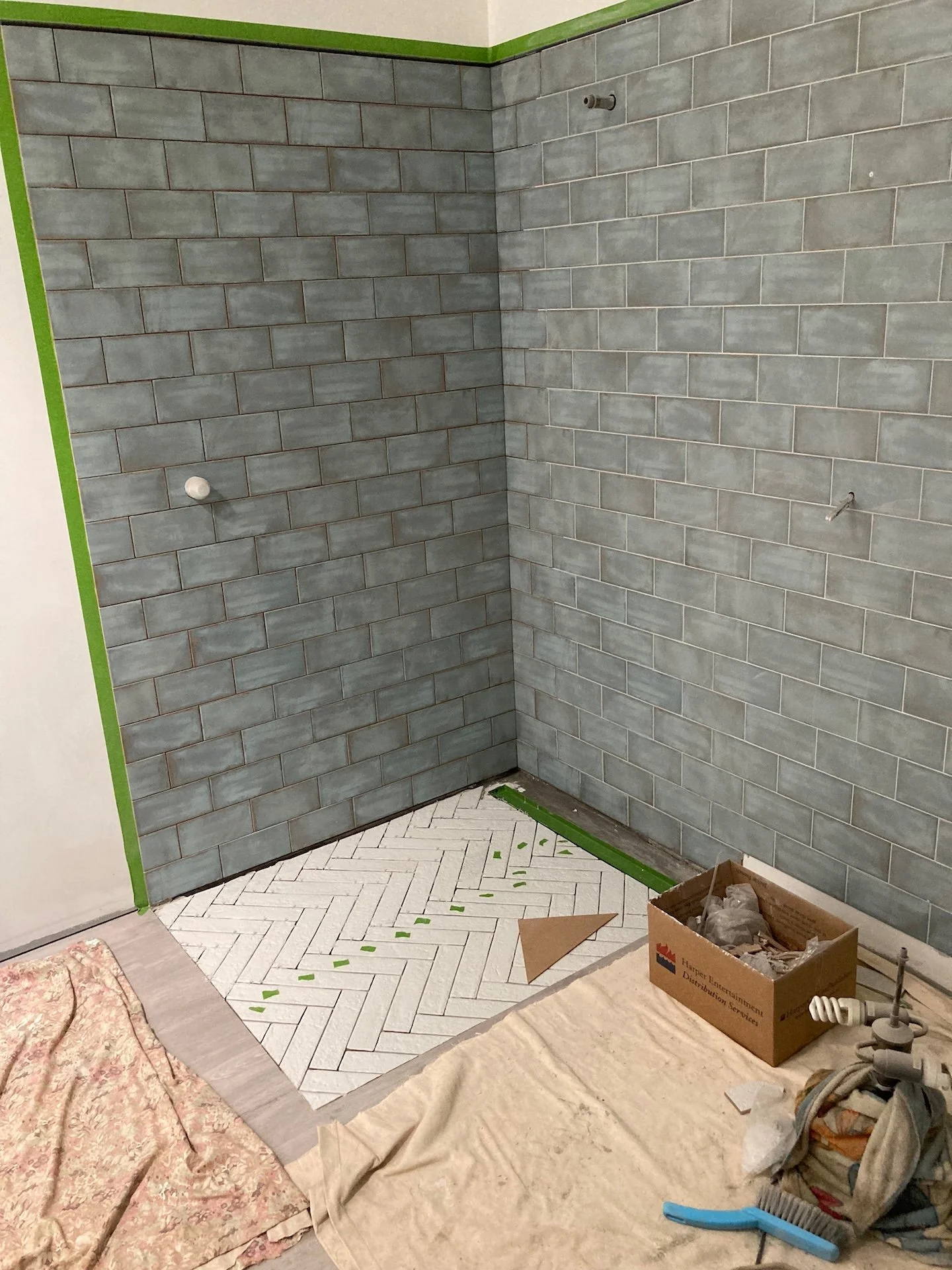Fixation #1: The Room That Became The Blue Room
Some rooms wait decades for the right person. Some of us know the feeling.
26 November 2025
• 1,109 words • 6 min read
The Room That Waited Decades
Some rooms flirt with you the moment you walk in.
This one didn’t.
It just sat there — square, quiet, a little shy — as if waiting to see whether I’d notice it. Once a garage, then a functional spare room for the family who built this house, it had never been the star of anything. It had held bicycles, boxes, visitors who arrived without warning. Useful, not loved. Practical, not intimate.
But there was something beneath all that stillness — a dormant dignity.
I’ve always been drawn to places, objects, even people who haven’t yet become themselves. But that’s another story.
What matters is this:
The moment I stepped into that room, I knew exactly what it wanted to be. That private little yes inside the body — I could feel it in my water. A quiet declaration: Here I am.
It was finally destined for greatness.
Before It Became the Blue Room
The floor plan called this end of the house the “mudroom” and “utility room,” which is technically correct but also the architectural equivalent of being called nice after you’ve had sex — never quite the look you were going for.
Inside the mudroom was a bathroom so compact it felt like an afterthought, an apologetic courtesy. A toilet, a shower, a tiny sink arranged so tightly the room seemed to brace itself. A place for function, not lingering. The larger room beyond had slate tiles, exposed brick, and a skylight doing its best to create ambience. But at the far end, the hot water system, underfloor heating controls, and ducted vacuum stood lined up like they were plotting a coup.
Behind the hot water system, the chaos of pipes and valves looked ready to bolt from the wall at any moment. It all worked — it simply hadn’t been invited to be anything more.
The “bedroom” space was equally unbothered by its own potential: thin carpet on concrete, brick walls, sliding-door access to outside, and a door back into the house. It had lived several lives: garage, overflow bedroom, understudy. Never designed. Never indulged.
And yet — one undeniable asset: the view across to Mount Buffalo.
Even undecorated, the room whispered promise.
The Vision That Changed Everything
From the beginning, I knew the room needed a real ensuite with presence, and somewhere sensible to hang coats — after enough Victorian winters, these become non-negotiables.
The bedroom had scale; it just needed direction. My builder realised that to give the bathroom the proportions it deserved, we’d need to move the internal wall between the bedroom and the utility area. That single shift gave the new bathroom breathing room without compromising the generous sleeping space.
Once that clicked, everything else arrived easily —
the mural for the windowless bathroom,
the palette,
the feeling of it.
The room that had spent decades as an afterthought finally had a direction.
Becoming a Room With Presence
I chose a deep, regal blue — Dulux Integrity — for the walls, grounded with crisp white trims. Masculine enough for a teenage boy to study in but elegant and timeless enough to satisfy my own taste.
A warm-toned wool carpet from my previous house went in with new underlay. An antique mid-toned cupboard from the Southern Highlands fit the room as though it had been waiting. Matching timber shelves went up in the corner, the builder hiding strip lighting beneath so the desk area glowed without effort.
The desk was industrial, simple, purposeful.
A second-hand timber bed from Facebook Marketplace was sanded and spray-painted white over several days of determination and dust. A bedside table made from recycled timber salvaged from the old Paddington Women’s Hospital in Sydney sat beside it. Vertical panel blinds across the sliding door offered privacy; a roller blind softened the window.
For a time, it became my son’s room — separate enough to be his own kingdom, close enough to remain home.
The Time My Son Called It His
It served him well: a space that felt both independent and held, sunlit by day and cocooned by the deep blue walls at night. Rooms often grow into themselves through the people they shelter, and this one began to feel lived-in, trusted, no longer an architectural afterthought.
And then, as life does, it shifted again.
Opening the Space to the World
When my son left home and the room became The Blue Room, I added small touches for comfort and self-sufficiency:
a fridge under the desk,
a tiny blue microwave,
a kettle that glows blue when it boils,
a tripod café table,
a slimline heater for winter warmth.
Sheridan-quality sheets became the baseline. Cushions and pillows in abundance. A soft winter blanket folded at the foot of the bed. Pale blue rugs. A blue velvet office chair.
People have come from every corner of the globe and found their own small rest here — couples, friends, solo travellers, guests with dogs curled at their feet. Around a hundred and fifty separate stays so far, each leaving some quiet trace of themselves behind. The room seems to enjoy the company; it wears these visits lightly, as if it always suspected its future would involve good stories.
The room had always kept a little independence for itself. That side door — opening to the patio rather than into the house — gave it a natural privacy long before I understood why that mattered. It was already half a sanctuary.
Transforming the Bathroom from Utility to Sanctuary
If the bedroom was about possibility, the bathroom was about reclamation.
That little space had spent its life being functional rather than loved — a room that never asked for anything because no one had ever offered it more. Once the work on the bedroom was done, the bathroom revealed its own quiet hunger to be remade. What followed wasn’t just renovation; it was excavation. Layer by layer, we took it back to its bones to see what might be possible.
The Bathroom: A Small Masterpiece
The bathroom was where the transformation became art.
Walls and splashback: August Blue glazed ceramic subway tiles (100 x 200mm) from Tile Touch.
Shower floor: Ellerston White rustic brick-look tiles (60 x 250mm), herringbone.
Black pencil tiles: Marble & Ceramic Corp, Melbourne.
Mural: TheGoodiesWallpapers, Poland (via Etsy).
Black tapware: The Blue Space.
Vanity, benchtop, shaving cabinet: Arova Melbourne.
Shower screen and drain: Fontaine Industries.
Pendant light: Mercator Prisma, from JD Lighting.
Towel rail, robe hook, mixer, fittings: Getter.
Toilet: Decina Renee rimless suite, from Brands Direct Online.
Doors: Agora Doors, Bayswater (a nightmare story for another day…)
Lino flooring: Myrtleford Flooring Xtra.
Black flush button and sink waste: Accent Bath Online.
Piece by piece, the bathroom became its own world — small but confident, self-assured in its beauty.
A Room That Finally Became Itself
Some rooms are instantly knowable. Others wait.
This one waited decades — through boxes, bicycles, reluctant visitors, teenagers, and utility labels — until it found someone who could see the outline of what it could become.
It is, finally, the room I saw in that first quiet moment — not flirting, not performing, simply waiting for someone to understand what it wanted to be.
A room can wait a long time for its yes.
Some of us can, too.
